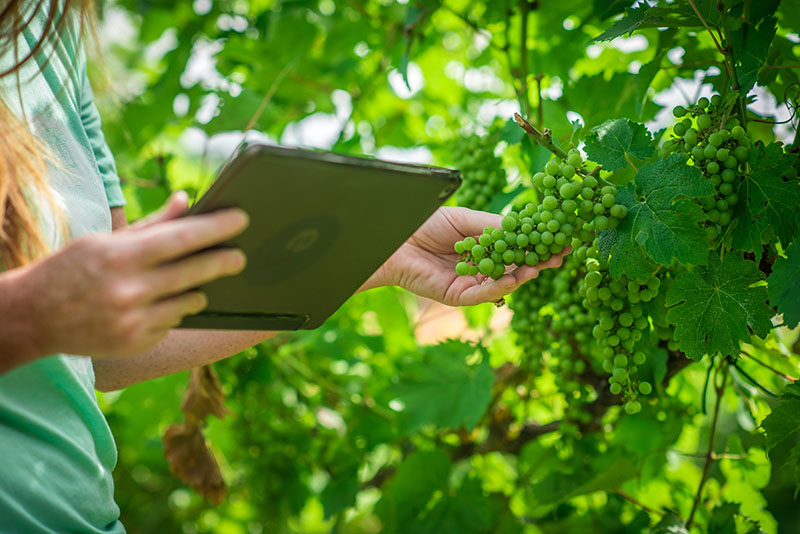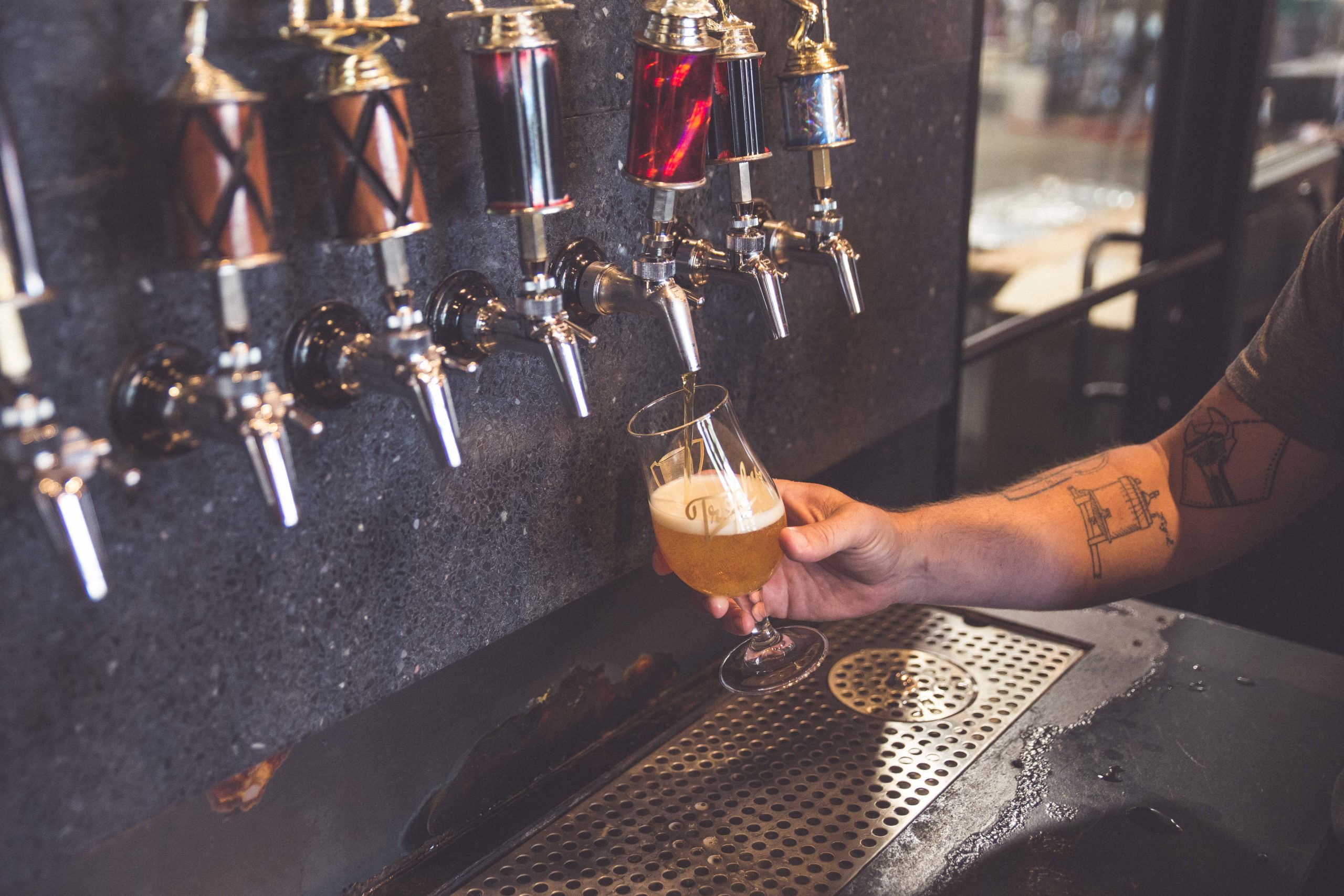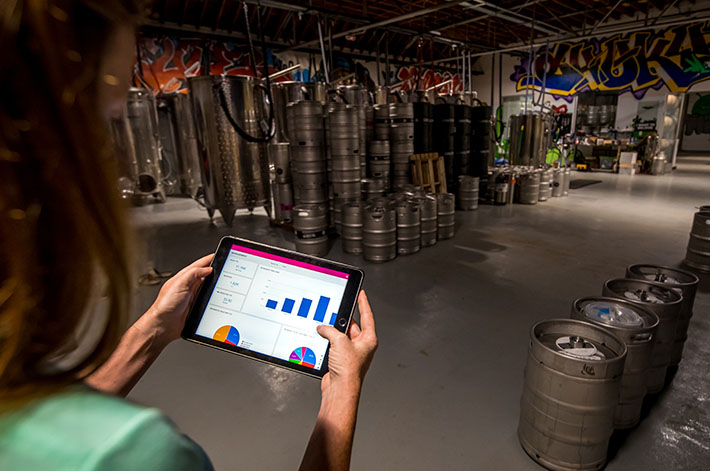
How does your team organize harvest information? We’ll take a guess: various notebooks strewn around the winery (or in your pocket for safekeeping) and messy whiteboards with notes and unassigned tasks. Maybe you have one notebook for weigh logs, one for press logs, another for lab logs later in the production process… and the list goes on. Good luck making sense of that scribbled-down “data” later on.
We don’t mean to be dismissive, but the reality is that many wineries are lagging behind in technology adoption, and it can be a real competitive disadvantage. Digital tools help you improve overall efficiency and discover business insights that can lead to better decision-making now and in the future. Those strategic insights can make a big difference in a competitive market like wine. No matter how you look at it, this is the year to level up your harvest processes.
Why Use Technology to Track Harvest Information?
Obviously, it’s an adjustment to go from quickly jotting something down in a tiny notebook in your pocket to entering it into a software system. But what kind of insights are you gathering from those notes when harvest season is over? And how is the rest of your cellar team (or the owners, if they’re interested for future planning) finding those notes later on? If they’re in your pocket or buried under piles of paper in the back office, they’re not exactly accessible.
Here’s how you and your team can benefit from using software during harvest:
- Efficiency and accessibility: With software, all records of harvest activities are in one place and accessible by your entire team. This makes finding information about a particular vineyard block and associated lots infinitely easier.
- Improved workflows: With software, you can go from grape intake and processing to fermentation and assign any necessary work orders to team members along the way. If a member of the cellar staff is temporarily unreachable, another staff member can easily see what tasks have been completed and what needs to happen next so workflows are uninterrupted.
- Better quality control: When you rely on a messy notebook or white board to track production activities, it’s easy to miss an important step in the process that could affect the ultimate outcome of the wine.
- Accurate recordkeeping: Recording harvest activities and related work orders leads to more complete and accurate data about how each wine got from grape to tank (or barrel). This is a business best practice, but it has the added benefit of making TTB reporting immeasurably easier later on. Plus, if you ever get audited or are asked to show proof of production information, you have the data safely housed in the software.
- Packaging and sales planning: Enhancing your harvest documentation processes allows you to more quickly and precisely forecast packaging needs and determine tasting room and club allocations. In other words, better recordkeeping during harvest leads to year-round benefits.
How to Use Software During Harvest Season

- Track harvest activities by block: As your team processes grapes, add blocks into your harvest management software. You should add the block name, varietal, vineyard, AVA or region, and any other notes you’ll want to review later.
- Process intake into multiple lots if needed: The software should allow you to assign multiple lots from a single intake. This gives the winemaker the ability to decide how many lots to make from a single intake after bringing it in, like when the wine is split into multiple vessels.
- Record weigh-in information: As you weigh your grapes, you can log their gross weight, net weight, and tare weight in the software. You can also attach photos and add notes.
- Log processing activities: Document key activities like destemming and crushing as you move through harvest. That way, you’ll have records showing how each lot was processed that you can reference later.
- Assign grapes to tanks or barrels: Once grapes have been destemmed and/or crushed, you can move pressed juice (physically, and in the software) to tanks for fermentation. This allows you to see at a glance which blocks made it into which tanks and barrels as well as what vessels are still available for use as you move through harvest.
- Keep track of additives: Logging when an additive is put into a batch and how much is used helps with traceability. With everything tied to the batch number in the software and associated blocks, you have clear visibility into what went into each wine.
The Last Item on Your Wine Harvest Planning Checklist
You might think it wise to wait until after harvest to dive into a new digital tool, but consider the benefits you’ll miss out on. To get the full benefits of winery software year-round, you’ll have to enter days (or weeks) worth of harvest data after the fact, which can take significantly more time than doing it on the fly. Why? The more time that passes, the harder it becomes to track down scattered information and remember where it was in your notebook. Plus, there’s a chance you scribbled something down in shorthand that you were sure you’d remember, but after a few weeks you’ve completely forgotten.
By getting your team ready now and jumping into harvest software with both feet, you’ll ensure using tech during harvest is a breeze. More importantly, you’ll reap the benefits of that data — actionable business insights — for the next 12 months and beyond.
Want to hear how Ekos can help make this year’s harvest your team’s best yet? Contact us today for a personalized 20-minute demo of our software.



